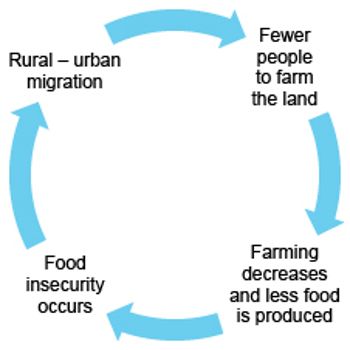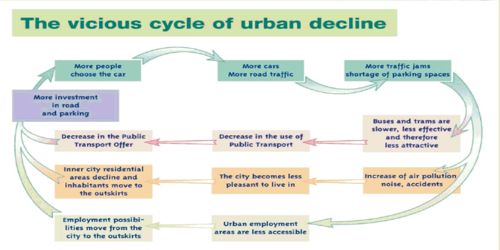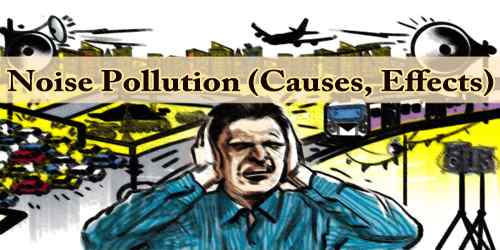Urbanization
It is an increasing concentration of the population in cities and a transformation of land use and society to a metropolitan pattern of organization.
At the beginning of the Industrial Revolution only 3% of the world population were living in cities. Now about 43% of the world’s people live in cities. In the U.S about 79% of the population is urban.

Causes of Urban Growth: Urban growth poses many problems, some of which are due to expansion of the population and some due to the physical expansion of the towns. The major problems caused by urban growth are discussed below.
Natural Resources:
Natural increase is fuelled by improved food supplies, better sanitation, and advances in medical care that reduce death rates and cause populations to grow both within cities and in the rural areas around them. Immigration is the second reason why population grows, and it is the largest source of its growth.
Immigration:
Immigration Push Factors – The “surplus” population is forced to migrate to cities in search for jobs, food, and housing. In some places, economic forces or political, racial, or religious conflicts drive people out of their homes. The UN estimated that in 2010 at least 15.9 million people fled their native country and that another 11.6 million were internal refugees within their own country, displaced by political, economic, or social instability.
Immigration Pull Factors – Even in the most chaotic cities, people are there by choice, attracted by the excitement, vitality, and opportunity to meet others like themselves. The most important thing to them is that cities offer jobs, housing, entertainment, and freedom from the constraints of village traditions. Possibilities exist in the city for upward social mobility, prestige, and power not available in the country.
The reasons for the growth of urban areas include:
- A lack of employment opportunities in the countryside. Overpopulation and poor crop yields are all push factors – why people leave the countryside.
- Better paid jobs in the cities, an expected higher standard of living, and more reliable food are all pull factors – why people are attracted to the city.
- People who migrate to towns and cities tend to be young and so have higher birth rates in that age range.
- Better medical conditions compared to the countryside mean more successful births and a better life expectancy.
There are many problems associated with the rapid growth. These include unplanned housing (squatter settlements/shanty towns), dealing with urban waste, pollution and stress on the infrastructure and the city’s services.
Water supply and sanitation
The provision of water and sanitation services to growing urban settlements, peri-urban and slum areas presents critical challenges. The increased demand for water from the growing population can place added stress on already stretched resources. In and around cities, water is commonly in short supply and subject to increasing competition by different users. Urban growth leads to increasing demand for water for industrial and domestic use, which conflicts with agricultural demands.
Current Urban Problems:
- Traffic and Congestion, Ex: In Sao Paulo, Brazil, the government passed such law that only allows certain cars to circulate on the streets according to their plate number.
- Air Pollution, Ex: An estimated 60% of Calcutta’s residents are thought to suffer from respiratory diseases linked to air pollution.
- Sewer System and Water Pollution; Ex: The World Bank estimates that only 35 percent of urban residents in developing counties have satisfactory sanitation services. In Egypt, Cairo’s sewer system was built about fifty years ago to serve a population of 2 million people. It is now being overwhelmed by more than 17 million people.
- Crime & Noise.
Cities of the Future:
An alternative to spreading the population across a wide area of countryside is to build upward. This model, which depends strongly on technology. They have been called the technopolis, vertical city, or city of the future. The central hub of most big American cities now is dominated by skyscrapers and a highly technological environment. The emerging supercities of the Developing World are also moving toward this style, in part because of its association with wealth, power, and progress
People Moving into Urban Areas:
Canada is an Urban nation with 80% of our population living in Urban areas.
- 90% of our population growth now happens in our 33 largest cities.
Urbanization is occurring globally as population grows and people move to larger economic centers.
- More than 50% of the worlds population now lives in urban areas
- In 1900 this number was only 13%
Information Source:
















